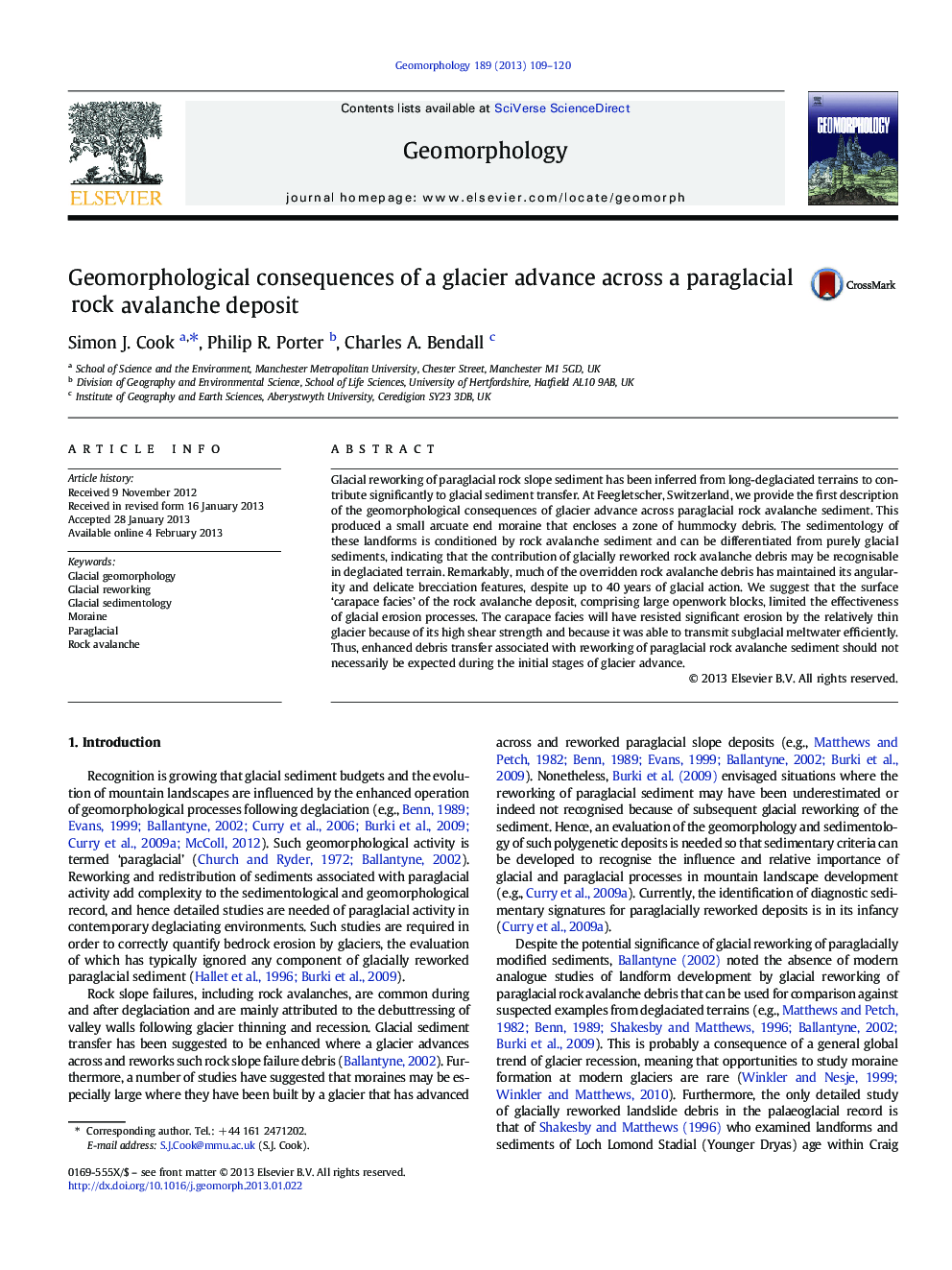| Article ID | Journal | Published Year | Pages | File Type |
|---|---|---|---|---|
| 4684916 | Geomorphology | 2013 | 12 Pages |
Glacial reworking of paraglacial rock slope sediment has been inferred from long-deglaciated terrains to contribute significantly to glacial sediment transfer. At Feegletscher, Switzerland, we provide the first description of the geomorphological consequences of glacier advance across paraglacial rock avalanche sediment. This produced a small arcuate end moraine that encloses a zone of hummocky debris. The sedimentology of these landforms is conditioned by rock avalanche sediment and can be differentiated from purely glacial sediments, indicating that the contribution of glacially reworked rock avalanche debris may be recognisable in deglaciated terrain. Remarkably, much of the overridden rock avalanche debris has maintained its angularity and delicate brecciation features, despite up to 40 years of glacial action. We suggest that the surface ‘carapace facies’ of the rock avalanche deposit, comprising large openwork blocks, limited the effectiveness of glacial erosion processes. The carapace facies will have resisted significant erosion by the relatively thin glacier because of its high shear strength and because it was able to transmit subglacial meltwater efficiently. Thus, enhanced debris transfer associated with reworking of paraglacial rock avalanche sediment should not necessarily be expected during the initial stages of glacier advance.
► We describe geomorphology produced by glacier advance across rock avalanche debris. ► Glacially reworked rock avalanche material is distinct from other glacial deposits. ► Glacially overridden rock avalanche debris experienced very little reworking. ► Openwork blocky rock avalanche sedimentology reduces its erodibility by glaciers. ► Enhanced glacial sediment transfer involving paraglacial material is not certain.
